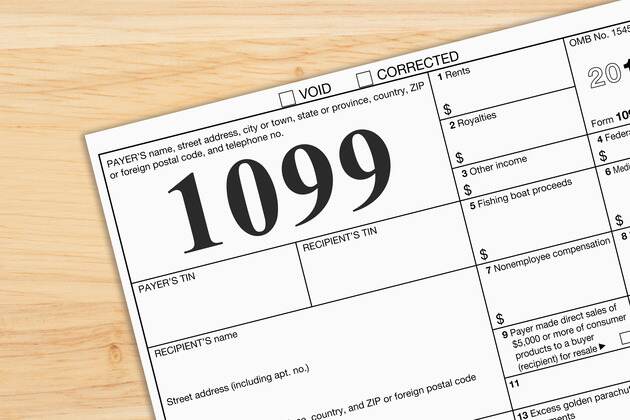How Independent Contractors Can Start Retirement Savings: A Complete Guide for Freelancers in 2025 in the US

Introduction
Saving for retirement as an independent contractor can be overwhelming, especially without the security of an employer-sponsored plan. But planning early can set you on a solid path to financial independence. This guide covers why starting early matters, retirement account options, easy steps to get set up, tax benefits, and even some tips for side jobs (like cash-based gig work) that can add extra funds to your retirement pot.
Why Start Early: The Power of Retirement Savings for Freelancers
As an independent contractor, saving for retirement might not always feel feasible. But starting early has significant benefits:
- Compound Growth: Even small contributions can grow substantially over time, thanks to compound interest.
- Financial Security: Setting aside money now reduces future financial stress, providing a cushion during unexpected events.
- Tax Advantages: Contributing to retirement accounts often provides tax deductions, allowing you to reduce your taxable income.
Whether you’re a new freelancer or a seasoned independent contractor, setting aside even a modest amount now can make a big difference later.
Types of Retirement Accounts for Independent Contractors
Independent contractors have access to several retirement accounts tailored to their needs. Here are the top options:
SEP IRA (Simplified Employee Pension)
- Overview: The SEP IRA is one of the most popular options for freelancers and small business owners.
- Contribution Limits: For 2024, up to 25% of your net income or $66,000, whichever is lower.
- Advantages: Contributions are tax-deductible, helping you reduce your taxable income while building savings.
SIMPLE IRA (Savings Incentive Match Plan for Employees)
- Overview: A SIMPLE IRA allows for both employee and employer contributions, making it great for freelancers with small teams.
- Contribution Limits: Up to $15,500 in 2024, plus a $3,500 catch-up contribution if over 50.
- Advantages: Straightforward to set up and a good choice if you plan to grow a small team.
Solo 401(k)
- Overview: Designed for self-employed individuals with no employees (other than a spouse), a Solo 401(k) offers high contribution limits.
- Contribution Limits: Up to $66,000 in 2024, plus an additional $7,500 if you’re over 50.
- Advantages: Allows both employee and employer contributions, maximizing savings potential.
Choosing the right account depends on your income, financial goals, and whether you work solo or with a small team.
Steps to Start: Setting Up Your Retirement Plan
Here’s a straightforward guide to start saving for your retirement:
- Assess Your Income: Decide how much you can realistically set aside each month. Even $50 or $100 per month can add up.
- Choose an Account: Based on your needs, select the best retirement account type. SEP IRAs, SIMPLE IRAs, and solo 401(k)s are popular among freelancers.
- Open an Account: Set up an account with a trusted provider like Fidelity, Vanguard, Charles Schwab, or M1 Finance. Opening an account usually takes just a few minutes online.
- Automate Contributions: To make it easy, set up automatic monthly contributions. This way, your retirement savings stay on track, even during busy months.
- Review Annually: Each year, assess your savings progress. Adjust your contributions as needed based on changes in income or new tax benefits.
Supplementing Income with Side Jobs for Cash
Some independent contractors also take on side jobs, which can provide additional funds for retirement savings. While some gigs are cash-based, make sure to report income accurately for tax purposes and consider setting aside a portion for retirement.
Popular Side Gigs That Pay Cash:
- Delivery Driver (W10): Working as a 1099 contractor for services like W10 can provide a flexible source of income, often paid in cash or direct deposit.
- Freelance Trades: Offering services like carpentry, plumbing, or repair work locally can lead to additional cash-based income.
- Tutoring and Babysitting: Cash-based tutoring or babysitting gigs can provide extra income. Consider setting aside a percentage for your retirement each month.
By funneling a portion of cash earnings into your retirement account, you can increase your contributions and enjoy the benefits of compounding interest.
Tax Benefits: Maximize Savings with Tax-Deferred Contributions
One of the biggest perks of retirement savings accounts is the tax advantages they offer. Contributions to SEP IRAs, SIMPLE IRAs, and solo 401(k)s are generally tax-deductible, lowering your taxable income. Plus, any growth in these accounts is tax-deferred until you start withdrawing in retirement, helping you save more over the long term.
Start Your IRA Today with Our Trusted Partners
We’ve partnered with top providers to make setting up an IRA easy for freelancers and independent contractors. Here are a few options to get started:
- Fidelity: Known for low fees and a range of investment options.
- Vanguard: Ideal for long-term, low-cost investing.
- Charles Schwab: Offers tools and resources specifically designed for freelancers.
- M1 Finance: Provides flexible account management and an intuitive platform.
Each link takes you directly to the account setup pages, so you can get started on your retirement today.